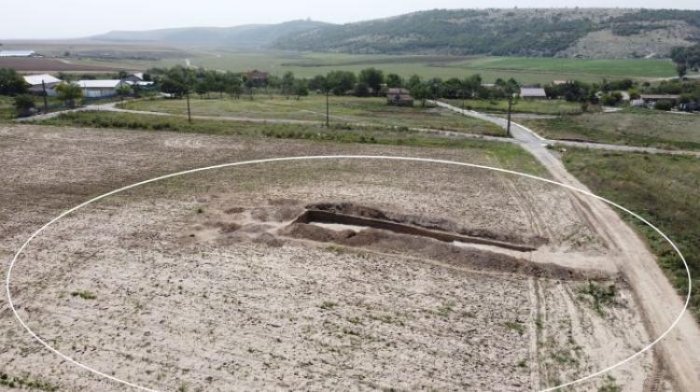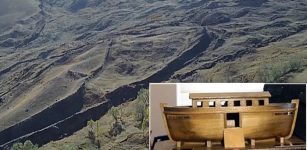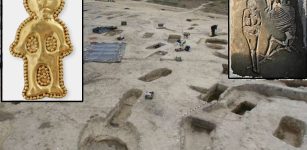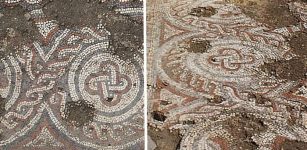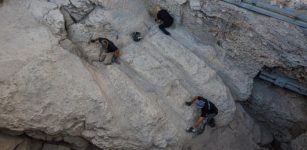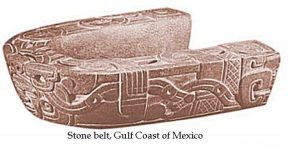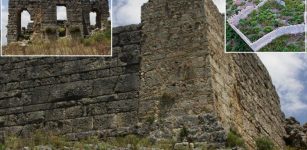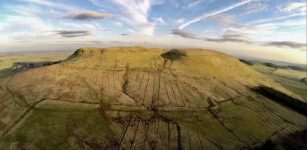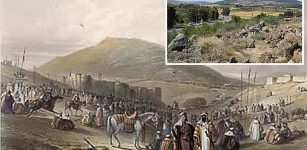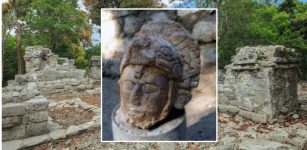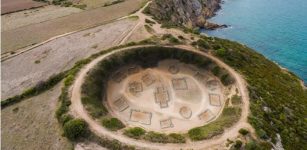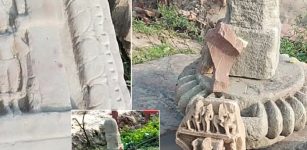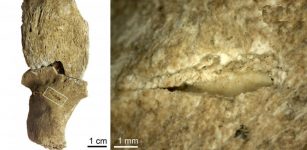Archaeologists Make An Unusual Find In A 2,000-Year-Old Romanian Burial Mound
Conny Waters - AncientPages.com - When archaeologists excavate, they make the most curious discoveries possible. What was perfectly natural to our ancient ancestors is regarded as unusual today.
During excavation in the town of Cheia, Romania, scientists found a wolf skull that was supposed to protect robbers from the revenge of the spirit of the deceased buried in a great mound 2,000 years ago.
The range of the studied burial mound in Cheia, Dobrogea. Credit: Șt. Georgescu
The mound is now almost invisible to the naked eye, because it is located in a cultivated field and has been ploughed up. The latest geophysical research shows that its diameter could be up to 75 m. The tomb is located in the village of Cheia in the central part of Dobrogea in south-eastern Romania. This region has been the target of the Romanian-Polish expedition since 2008.
Archaeologists have found two graves. The first one, located in the centre of the mound, was looted in antiquity.
'The closing of the robber's dig was interesting and unusual. A few stones were placed there, with a wolf skull on top of them. It was probably a magical ritual aimed at closing the looted space to prevent the robbed spirit from exiting and taking revenge," says Poland’s research leader Dr. Bartłomiej Szymon Szmoniewski, from the Institute of Archaeology and Ethnology of the Polish Academy of Sciences.
The robbers did not steal everything from the grave. In the robber's dig, the archaeologists found a fragment of a clay oil lamp, broken during the robbery. Its other part of which was in the grave pit.
Wolf skull, partially cleaned. Credit: B. S. Szmoniewski
According to Dr. Szmoniewski, in the grave pit itself there are partially burnt parts of a wooden structure, which was joined with nails and decorated with bronze fittings.
"It was probably a wooden box that contained the body of the deceased and grave goods. It was burned on the spot, as evidenced by the strong burn of the walls and the bottom of the pit. Then, the pit was covered with wooden boards and filled in. Barrows with very similar cremation burials were discovered in Hârșova, known in the Roman period as Carsium, on the lower Danube," Szmoniewski says.
There is not much left of the skeleton, because the deceased was cremated during the funeral; only burnt human bones have been preserved.
The researchers also found a large number of burnt walnut seeds preserved whole and as shells, parts of pine cones and other plant remains.
"The presence of burnt walnut seeds in the burial is an interesting custom known from crematory graves from the early Roman period. In the sepulchral context, walnuts are interpreted as a kind of grave gift - special food for the soul. In the Casimcea river valley in Dobrogea, where we are conducting research, this is the first find of this kind," Szmoniewski says.
This was not the only grave discovered in the barrow. The other one was located at a distance from the center of the barrow. Archaeologists found a skeleton in it, placed in a wooden structure, probably a coffin, the remains of which were found both above and below the skeleton.
Burnt walnut seed from the crematory grave (M1). Credit: B. S. Szmoniewski
According to Dr. Szmoniewski, the deceased had a glass unguentarium placed on the stomach - a kind of container for liquid fragrances and toilet perfumes, and in the mouth there was a bronze coin (an assarius) from the reign of Emperor Hadrian, minted in 125-127 CE.
Skeletal grave (M2). Credit: V. Voinea
"The coin in the mouth of the buried refers to the ancient custom of Charon's obol, when a coin inserted into the mouth was to be used as payment to Charon for transporting the soul of the deceased across the River Styx in Hades," Szmoniewski says.
Crematory grave (M1). Credit: Șt. Georgescu
Both graves date from the mid-2nd century CE. This is an important discovery for scientists, because barrows have not been discovered in this region until now.
See also: More Archaeology News
"The unusual wolf skull found at the exit of the robber's dig in one of the graves may indicate that the robbery was committed by the Dacians - a people who had lived this area before the arrival of the Greeks and Romans,"says Dr. Szmoniewski. "In turn, the deceased buried in the two graves were probably Romans who came to this area during the Roman colonization."
According to Science in Poland, the graves were discovered in 2022. Archaeologists plan to continue the research this year. The season will start in August.
Written by – Conny Waters - AncientPages.com Staff Writer

